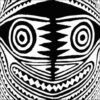Tribal War Clubs of Melanesia
There are many different styles of Tribal War Clubs. They vary in style and shape depending on the region/tribe they come from. This article is an introduction to the different types of tribal war clubs from Melanesian and Micronesian war clubs. It has images to help readers identify where a war club comes from.
Tribal War clubs are quite beautiful in their own right and are highly collectible. They are not just collected by militaria enthusiasts but by collectors of ethnographic art.
I buy Tribal War Clubs and Polynesian war clubs so if you have one to sell I would love to see it. If you just want to know what your Tribal war club is worth please feel free to send me a Jpeg.
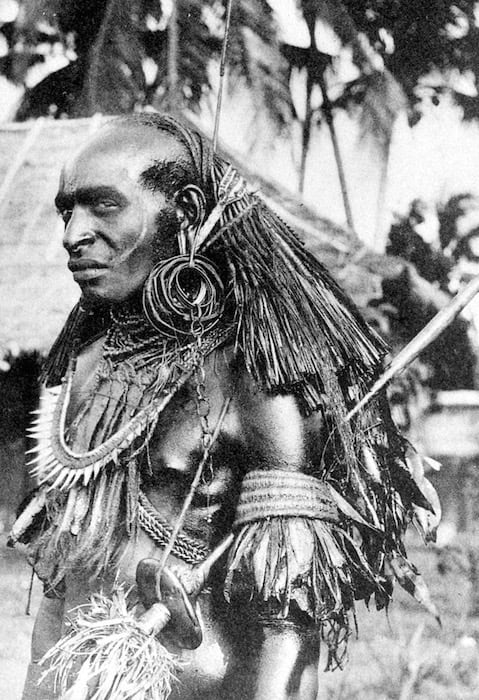
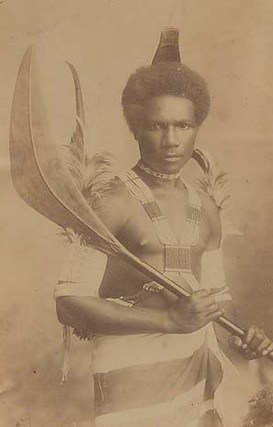
Tribal War clubs General information
Tribal War Club Types
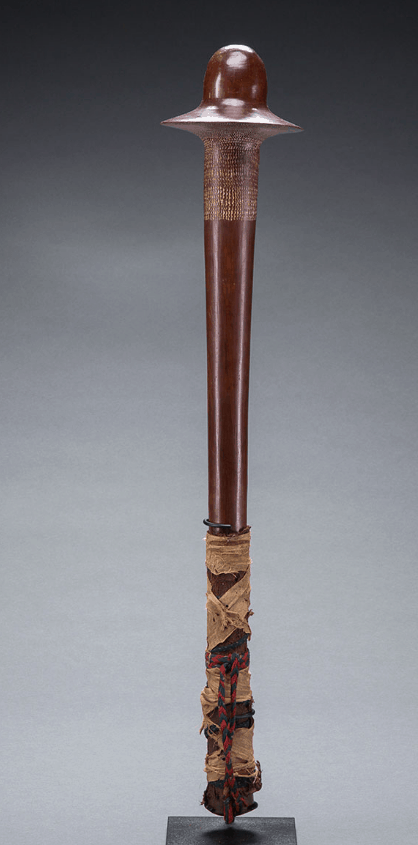
New Caledonian Tribal Clubs
There are a variety of different clubs from New Caledonia. These first two shown here are the most common to come onto the market.
The club to the left is referred to as a Phallic club. The one on the right is a bird-headed club
Clubs from New Caledonia are recognizable from the bottom of the handle which flares to a slightly wider diameter.
New Caledonia clubs are Melanesian but with strong Polynesian influence. The style, wood
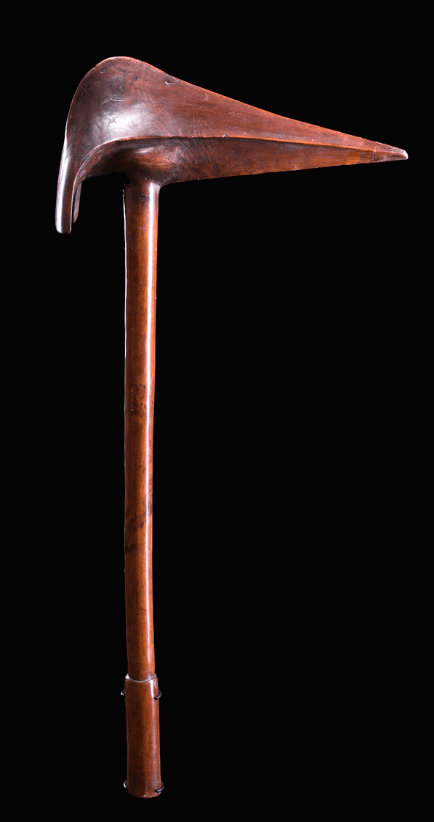
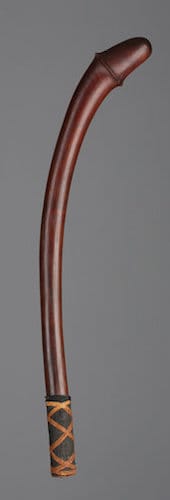
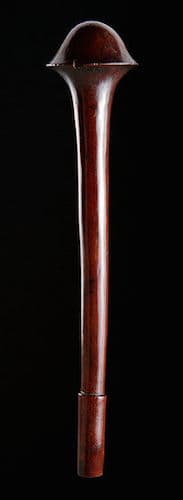
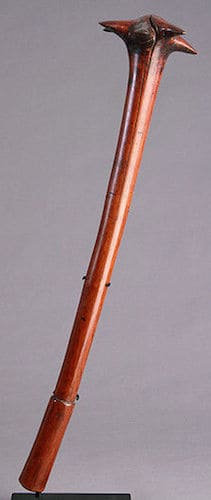
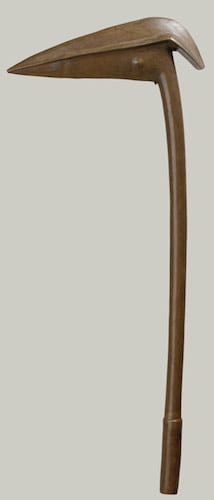
Vanuatu Clubs
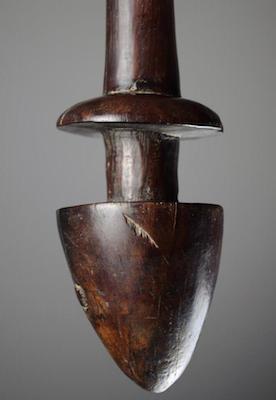






Tribal Clubs from the Solomon Islands

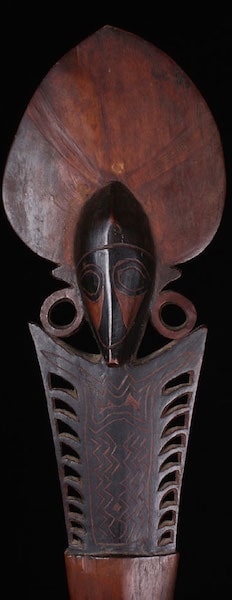

Buka Island Clubs
Clubs from Buka Island in New Guinea are artistically North Solomon islands. They are very collectible due to the wonderful figures found on the handle.
Even the figure from the handle alone is of some collectible value. They are usually made from Kwila or other dark hardwood trees.
Used in ceremonial dances and they are sometimes called dance paddles.
Solomon Island Paddle clubs
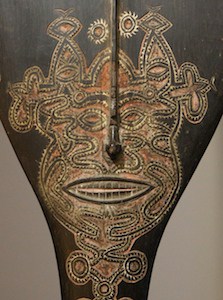

Alafolo Club
Made from heavy ironwood these clubs come from Malaita Island. They have two protuberances that are often referred to as noses.
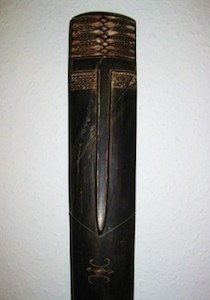
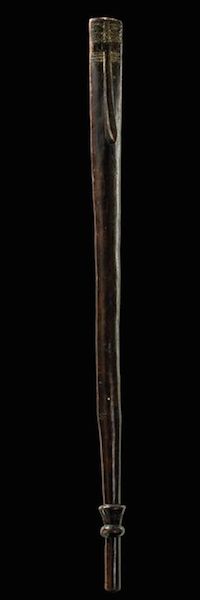
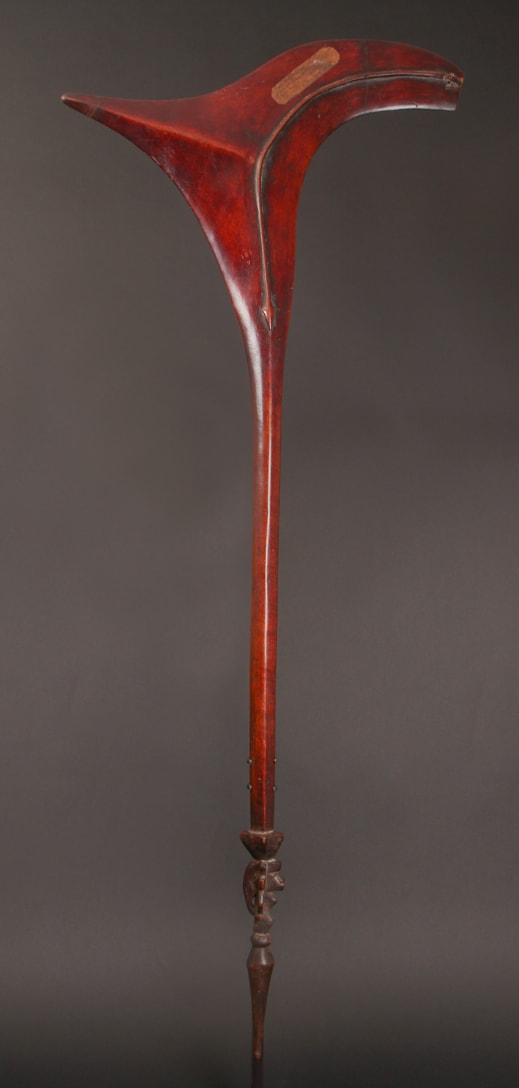
Solomon Island parrying clubs
These shield clubs had a defensive purpose and were for deflecting light spears and arrows.
The type on the left called a Roromaraugi is very collectible. Value is often determined by how pretty the figure on the bottom of the shaft is.
The type on the right called a Qauata and is far more common.
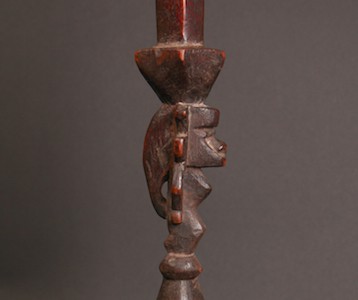
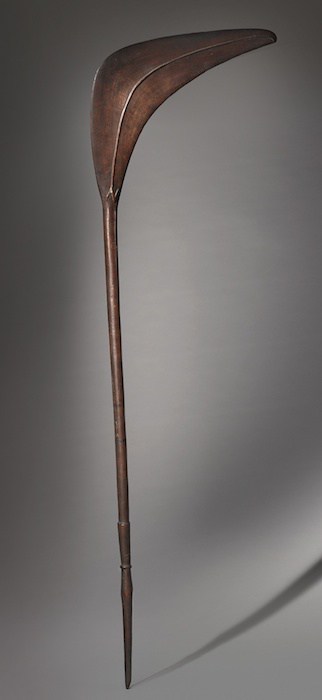

Solomon Island Baton
Solomon Island ceremonial batons are often thought to be a club or cudgel. They come from the Araere People South Malaita Island. The shaft is inlaid with pearl or nautilus shell and the top with a woven cane over wood.
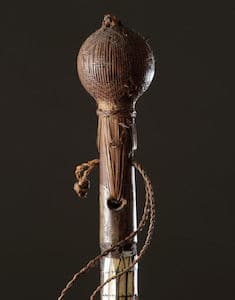

Subi of Supe club
These come from Malaita Island and have a coir string binding on the handle. These were made for sale and barter to servicemen in world war II in the hundreds. Old ones are quite rare but WWII examples are very common.

Nggela Solomon Island War club
These clubs are quite common but often have the binding on the handle missing.
Most serious collectors want an example that has the finely woven binding on the handle intact.
Santa Cruz Dance Club
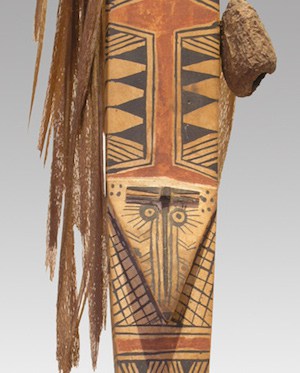
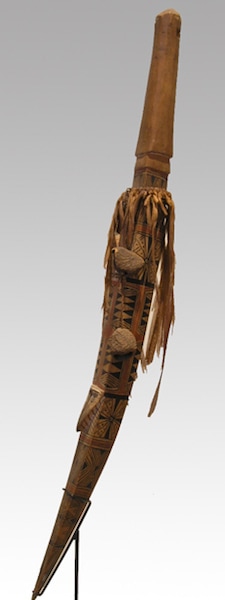
Solomon island throwing Club
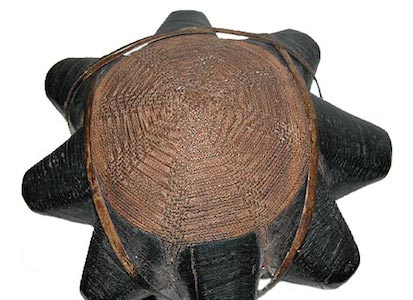
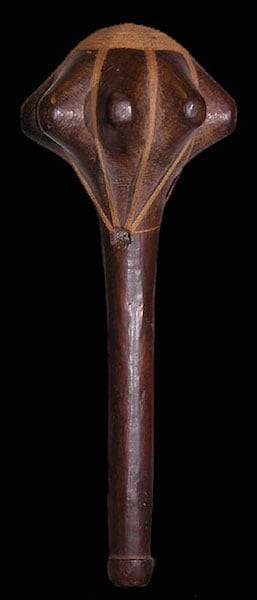
Micronesian Clubs
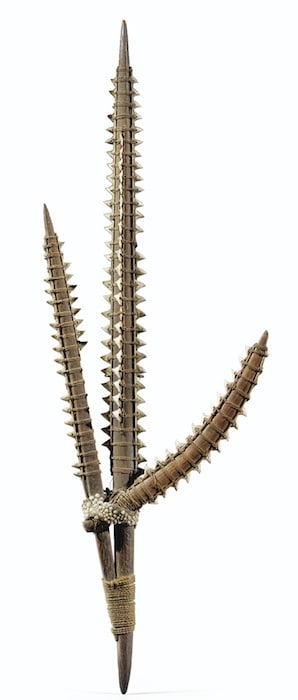
Kiribati Island Clubs
The best-known war clubs from Micronesia come from Kiribati Island. Edged in sharks teeth attached to a wooden club by coconut fiber string and come in several different forms.
Used in spectacular ritualized fighting between the clans. Kiribati is one of the few places in the Pacific Islands to have a form of armor
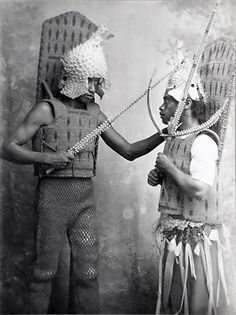
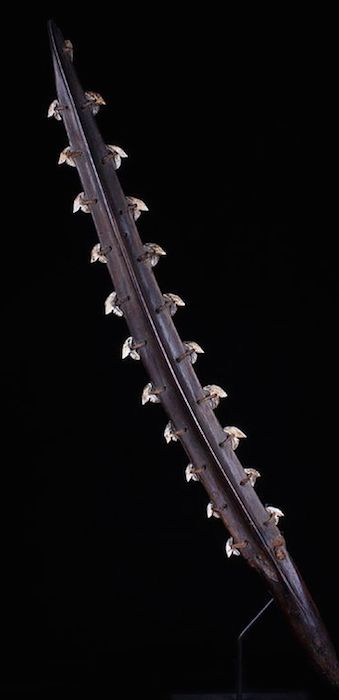
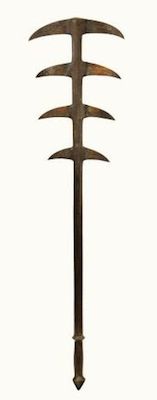
Wuvulu Weapons
Weapons from Wuvulu are surprisingly common but the majority are tourist examples. Old genuine weapons from Wuvulu island are rare and collectible.
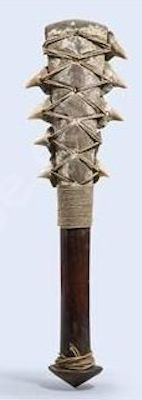
New Guinea War Club Types
Massim Clubs
Massim Clubs were both ceremonial and for fighting. Most have surprisingly little value because there are so many of them.
There are exceptions though. The rarer types often come from the Southern Massim area.
Massim clubs usually have scrolls and abstract snake designs
Clubs are often made from either ebony or black palm and have a refine almost Polynesian feel to them.
Some Massim clubs were for sorcery. A club pointed at someone by a magiacian was a death sentence.
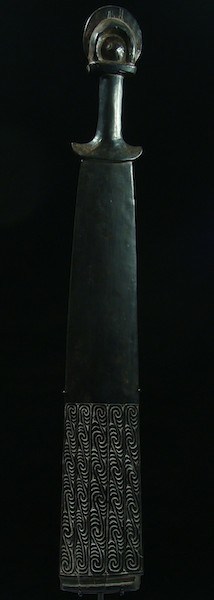



East New Britain Clubs
The two most valuable clubs from East New Britain come from the Sulka and the Tolai People. They both have wonderful forms and are often mistaken for Polynesian due to the quality of the finish on them.
East New Britain also has a stone-headed club which is unique insofar as it is not attached with woven cane
The Sulka have other plainer more pole like clubs.
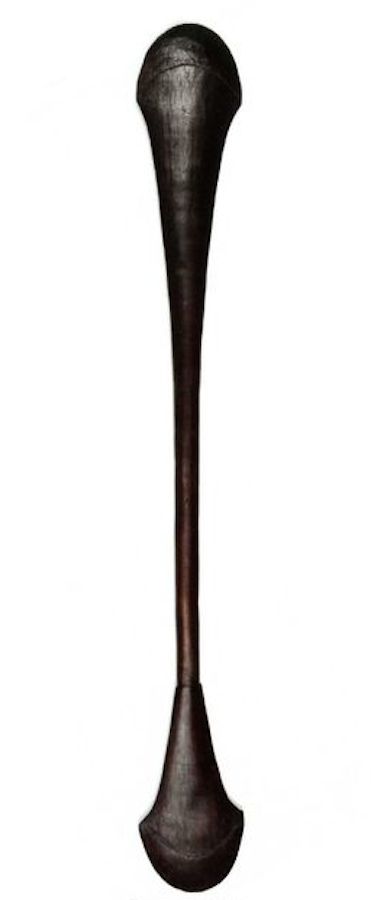
Huon Gulf Tribal Clubs
The Huon Gulf has two types of clubs neither of which was for warfare. The most collectible of these clubs for ceremonial dances by masked
The second type of lesser-known club (not illustrated) was for killing

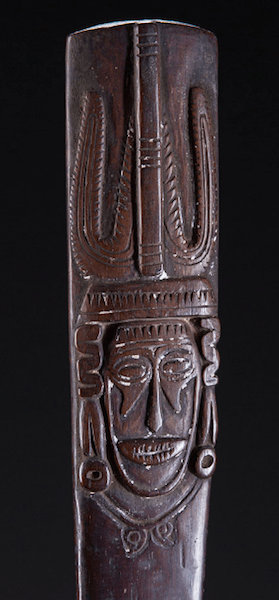
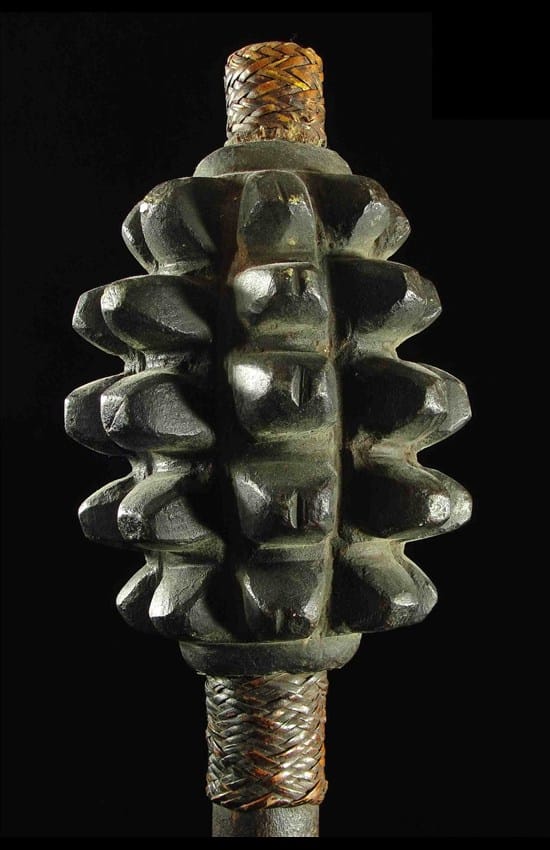
Stone headed Clubs
These clubs are the most common type of club found in Papua New Guinea They come from throughout much of the country. Stone headed clubs are particularly popular with the New Guinea Highlanders.
The war clubs have a variety of different shaped stone heads and it is often the shape of the head that determines the value. Complex pineapple shaped club heads are generally better than disk or ball-shaped stones.
Clubs that have the bindings and feathers intact are worth more than those without.
Damage to the stone reduces value considerably and most collectors want near-perfect examples.
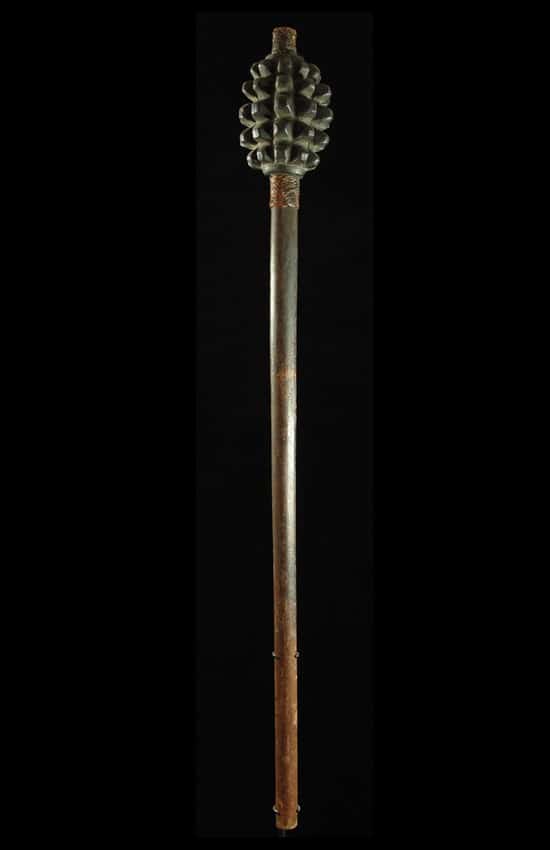


Papuan Gulf Clubs
The majority of clubs from the Gulf of Papua are either undecorated or used for sorcery.
The exception is the Boti which is one if not the most collectible New Guinea War Club. They are usually made from black palm and have Gope like designs on the upper half.
Clubs used for sorcery are shorter than Boti and often pointed. They also have designs of Gope spirits or clan motifs.

detail of a magicians club

New Ireland Clubs

Kukukuku Clubs
The Angu are better known as the Kukukuku and are one of the only tribes to use wooden clubs in the PNG highlands. Whereas most highlanders have set battles with bows and arrows the Angu prefer vicious raids.
Kukukuku wooden clubs are sometimes mistaken for aboriginal clubs but are recognizable by their paint and lack of butt grip.
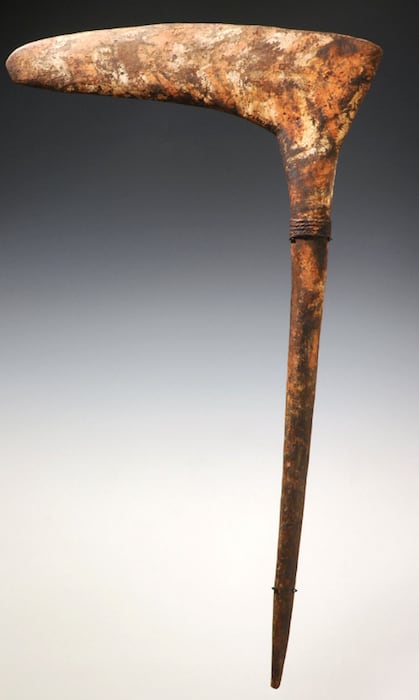
Tribal War Club Value
All old Tribal War clubs and clubs from the South Pacific Islands have some value. The value of a war club depends on the beauty rarity and condition. If you have a club and it isn’t shown here please look through my articles Polynesian clubs Fijian Clubs and Aboriginal Clubs. If you still cannot find information on a club feel free to send me some images.
All images in this article are for educational purposes only.
This site may contain copyrighted material the use of which was not specified by the copyright owner.
